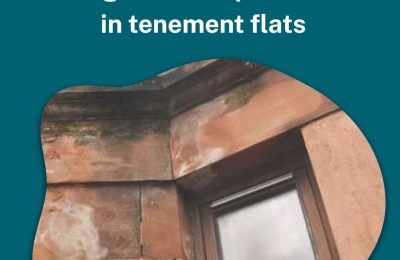The Housing (Scotland) Bill, launched on 26 March 2024, is currently working its way through Parliament and is expected to reach stage two of the legislative process shortly.
So, what does this mean for landlords?
One of the most contentious changes is the proposal for rent controls. Under the Bill, local authorities will be required to assess rent conditions in their areas at least once every five years. This information could then be used by the Scottish Ministers to designate Rent Control Areas (RCAs).
If an area is designated a RCA then rent increases will be capped at CPI + 1%, with a maximum of 6%. This at least provides a degree of certainty and reassurance for landlords, ensuring rental income can keep pace with rising costs without being arbitrarily restricted.
Policy work leading up to the legislation through the New Deal for Tenants talked about affordable rents, supply of rented homes and quality raising standards, but the legislation does very little to increase the supply of private rented homes and only offers rent control as the solution to improve affordability for renters.
In addition to rent regulation, the Bill proposes a number of changes to how landlords manage tenancies:
- Tenants would gain more rights to personalise their homes, including the ability to decorate and make certain changes.
- Permission for pets would be easier for tenants to obtain.
- New rules could make it simpler for tenants in joint tenancies to leave, even if there’s disagreement among the co-tenants.
- The Bill also lays the groundwork for converting older tenancy types, like assured and short-assured tenancies, into the modern Private Residential Tenancy (PRT) model, potentially through future legislation.
Further consultation
At the moment the government is conducting a further consultation on how powers within the Housing (Scotland) Bill could be used to exempt certain types of properties from rent control and allow for circumstances where rents could be increased above the cap. An example would be removing the application of rent control measures between tenancies in order to allow for the upgrading of a property or installing new energy-efficient measures.
The consultation can be read and responded to here. The deadline for responding is Friday 18th July and landlords are urged to take the time to respond.
For landlords, this Bill represents another significant shift in how the Private Rented Sector (PRS) is regulated. While it aims to create a fairer market, it also introduces further complexities and risks for landlords. It seems to us that rather than seeking to solve the issues around the lack of supply of rental stock the bill instead is focusing on artificial control of the market which could in turn further exacerbate the shortage of homes for rent in Scotland.
When will the new rules take effect? A look at the likely timeline
While the Housing (Scotland) Bill is progressing through Parliament, landlords are understandably asking: When will these changes actually come into force?
According to the Scottish Association of Landlords (SAL), the earliest we’re likely to see provisions take effect in the Private Rented Sector will be sometime during 2027–2028. It’s important to note that not everything will happen at once- different elements of the legislation are expected to be rolled out at different times.
Looking ahead, Rent Control Areas (RCAs) could start to emerge in Scotland as early as 2027. However, for this to happen, local authorities must first gather and present sufficient data to justify their introduction. Each council will be responsible for assessing its own rental market and determining whether to apply to the Scottish Government for RCA designation. This is a notable development, as it suggests a new layer of market analysis and reporting will be required at the local level, something we’ve not yet seen detailed guidance on and will of course take time to instigate.
The real issue that local authorities will have is accessing reliable data to make the assessments. Ever since the 2016 Housing Bill all local authorities have been able to apply for rent pressure zones which in effect are the same as that being proposed in the new Bill but there hasn’t been one local authority that has done so. This is simply because they don’t have access to up to date reliable data to properly assess local market conditions.
The proposed changes around tenant rights to have pets or personalise their homes are expected to take longer. These elements are likely to involve further consultations and detailed secondary legislation or guidance, so they may not come into effect until 2028 or beyond.
As always, the specifics will depend on how quickly the Scottish Government moves after the Bill becomes law and how prepared individual local authorities are to implement the changes.
As we move forward, it is worth pointing out that the rental market is evolving and not disappearing. The fundamental rental market in Scotland remains strong and with the right approach and support, landlords can adapt to these changes while maintaining profitable investments. Staying informed and seeking expert guidance can be crucial in this ever changing environment. If you feel you require tailored advice or have concerns about how this could affect your rental portfolio, contact an asset management company.









